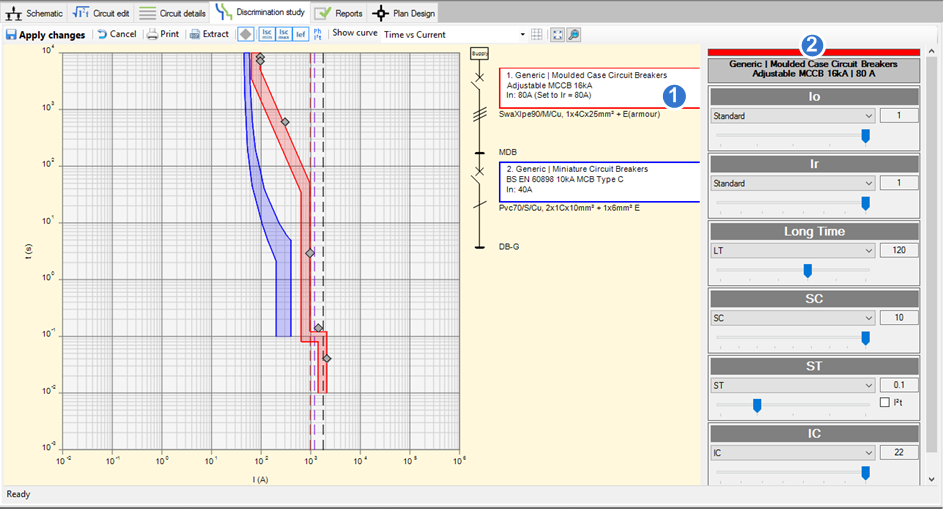Fixing Discrimination Problems
To resolve problems with discrimination the engineer must make sure that the time-current curves of the protective devices are not overlapping, or where manufacturer data are available, it can be done through the energy-based discrimination check. Please note that energy-based discrimination checks are performed only when the operating time of the device under study is less than 0.1 sec.
From the discrimination study module (1), the engineer can inspect the selected circuit's protective devices behavior against those of the circuits upstream. In this tutorial we have chosen a 63A Type C MCB for the MDB (2) and a 40A Type C MCB for the DB-G (3). This arrangement is causing a discrimination problem due to the overlapping of their time-current curves.

To resolve the above problem we need to choose a larger device for the MDB. At this point the engineer needs to choose a suitable device. If we select a 125A Type C MCB to resolve the discrimination problem, it will lead to an increase in cable size from 16mm2 to 70mm2 for the Main Distribution Circuit, which is not a good design for a domestic installation.
An alternative path is to choose an adjustable MCCB device that will be adjusted so that its time-amperes curve will not overlap with the downstream device.
To do so, click in the legend area of the main MCB (1). The overload setting of the MCCB device adjusted to the rated current 80A (Ir = 80A), leads from a 16mm2 to a 25mm2 cable size for the Main Distribution Circuit, which is acceptable for a domestic installation.
